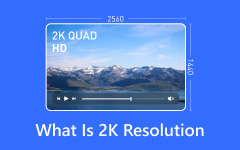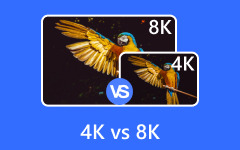Just consider when you last side-by-side compared two TVs. One was sharp and the other one more stippled, but both were very high-quality. And that is where the 2K vs. 4K story begins. Not much of an increment on the surface, but it will make a difference between what you see and play. In this article, we will unpack what 2K and 4K really mean, highlight their differences, and help you decide which works best. Plus, we will show you how upscaling plays a role in getting the most out of your screen.

Part 1. 2K vs 4K Resolution - What Are They
What is 2K Resolution?
2K resolution is a display format with a pixel width of about 2000. The official standard is 2048 × 1080, but the more common version is 2560 × 1440, also known as Quad HD or QHD. Many monitors and gaming laptops advertise this as 2K/QHD since it strikes a balance between sharp visuals and smooth performance. In the 2K vs. 4K resolution comparison, 2K is often the more practical choice because it requires less storage, uses less bandwidth, and works well with older hardware. Its main drawback is that it cannot match the finer detail of 4K displays.
What is 4K Resolution?
4K resolution pushes display quality further with about 4000 pixels across the screen. Cinema standards are 4096 × 2160, with consumer devices commonly at 3840 × 2160, called Ultra HD or UHD. In contrast to 2K, the pixel count is four times higher in 4K, which means the images are sharper and have a kind of realistic look. This qualifies it as the best choice with regard to modern televisions, streaming, high-performance gaming, and professional editing.
In the 4K vs. 2K debate, 4K is more future-proof, though it comes with higher costs, greater storage demands, and the need for faster internet speeds.
Part 2. What's the Difference Between 2K and 4K
When people ask what the difference is between 2K and 4K, the answer often goes beyond just numbers. The gap touches on resolution, viewing experience, performance, cost, and even content availability. Below are the main points that highlight the 2K and 4K difference.
1. Resolution and Detail
The biggest 2K compared to 4K difference is pixel count. A standard 2K display has 2560 × 1440 pixels, while a 4K display offers 3840 × 2160 pixels. That is nearly four times more detail. On large screens, 4K stays sharp even up close, while 2K may look softer.
2. Viewing Distance
When it comes to is 2K is better than 4K, it depends on how you watch. On smaller screens or from far away, 2K looks almost the same as 4K. But if you use a big TV or sit close to a monitor, 4K’s extra detail makes a noticeable impact.
3. Performance and Hardware Needs
The 2K and 4K difference is clear in gaming and video editing. Most 4K groupings necessitate stronger GPUs, quicker processors, and amplified capacity. 4K also exerts a requirement on the processing power, making it less smooth and perform at a lower FPS.
4. Streaming and Bandwidth
Streaming highlights another 2K vs. 4K resolution distinction. A typical 2K stream can require approximately 5 Mbps, whereas a 4K stream can require a potential speed of at least 20 - 25 Mbps. If your internet connection is not very good, 2K is a smoother game.
5. Cost and Accessibility
Finally, in the 4K vs. 2K debate, price is a deciding factor. The 2K monitors and television sets are less expensive, and more people have access to them. The 4K TVs and monitors are also becoming affordable to more people with time.
Part 3. 2K vs 4K - Which One Is Better
1. Visual Quality and Detail
When comparing 2K movies to 4K movies, the most obvious change is the level of detail. A 4K screen has four times the pixels of a 2K screen, which makes the picture noticeably sharper. Edges look smoother, textures are more defined, and colors appear richer. For action-packed films or wide cinematic landscapes, 4K feels much closer to real life. However, on smaller screens, the difference between 2K to 4K may not be as noticeable, which is why some people stick with 2K when screen size or viewing distance doesn’t demand 4K.
2. File Size and Storage
Switching from 2K to 4K also means dealing with much larger file sizes. A 4K movie can be two to three times bigger than its 2K version. This affects both storage space and streaming. If you are downloading or keeping movies on your hard drive, expect them to take up more space. That is why you might need to know how to compress a video to save some space. Streaming in 4K also requires a stronger internet connection, usually 15–25 Mbps or higher, compared to the lighter bandwidth needed for 2K.
3. Compatibility and Conversion
Not all devices are built to handle 4K smoothly. Older monitors, TVs, or laptops may struggle to play 4K movies without lag or downscaling. In these cases, a 2K to 4K converter can help by adapting the resolution to fit your display or by upscaling older content to appear sharper on 4K screens. This ensures you can still enjoy higher quality even if your original files are in 2K.
4. Upscaling Technology
Modern TVs and media players often include 2K to 4K upscaling. This feature is a complementary feature to analyze each frame and fill in the missing detail, making 2K content look more native 4K. Although upscaled movies will not be a full match of the true 4K, when displayed on a larger screen, the difference is apparent. It can enable you to experience your Library of older 2K titles without having to replace all of them with 4K.
It demonstrates that 4K is unquestionably superior in terms of the visual result, yet such aspects as file size, compatibility, and storage make 2K a practical alternative. Users can upscale with the help of upscaling and 2K to 4K converters to enhance content without the need to go entirely to a different format.
Part 4. 2K to 4K Upscaling - How to Achieve
When you already have a 4k video converter, you can convert 2K videos to 4k without hassles. Rather than downgrading to the lower res, you can upscale your videos to look better and crisper on high-resolution displays. Tipard Video Converter Ultimate makes this process simple with its one-click upscaling feature. Whether on Windows or Mac, you can quickly turn 2K movies into 4K quality and enjoy a clearer, more immersive viewing experience.
Step 1 Get the latest version of the 2K video upscaler on your PC by clicking the download button that we have here, following the setup and installation process, and continuing to the next step.
Step 2 Hit the + button that appears on your screen to upload the 2K video you want to upscale into a 4K. Here, you can upload multiple videos and convert them into 4K simultaneously and without limitations.
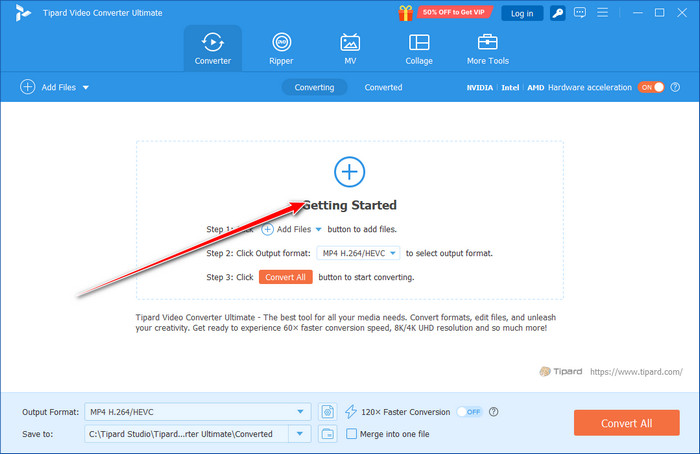
Step 3 Once uploaded, hit the dropdown button and type the 4K in the search bar to see what the available formats that offer 4K resolution are as an output.
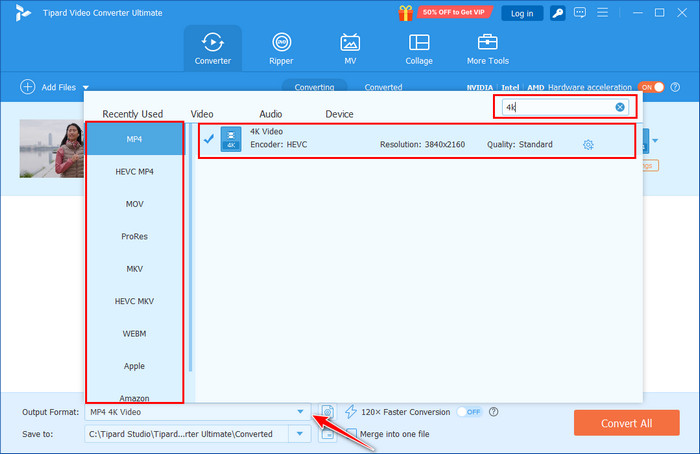
Step 4 After selecting the output, click the Convert All button to start the upscaling process, and you will get the final 4K res video and no watermark.
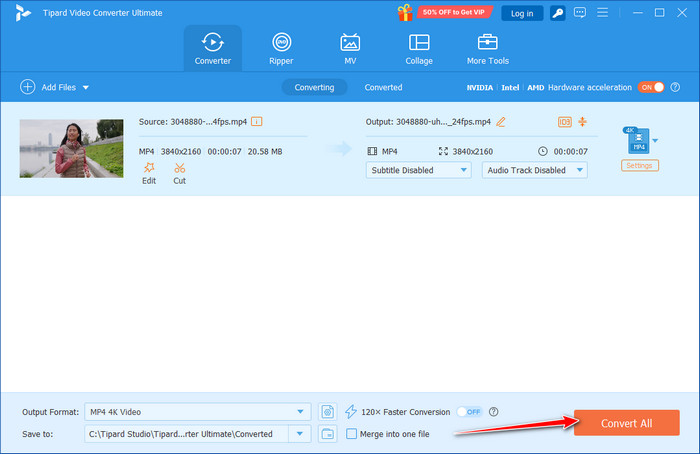
Conclusion
This article truly showcases the difference between 2K vs. 4K resolution, which gives us the idea that it does not mean 2K video has a low resolution or that 4K is the better resolution. Choosing the right resolution for a video always depends on a certain situation and the specifications needed, as we mentioned here.




